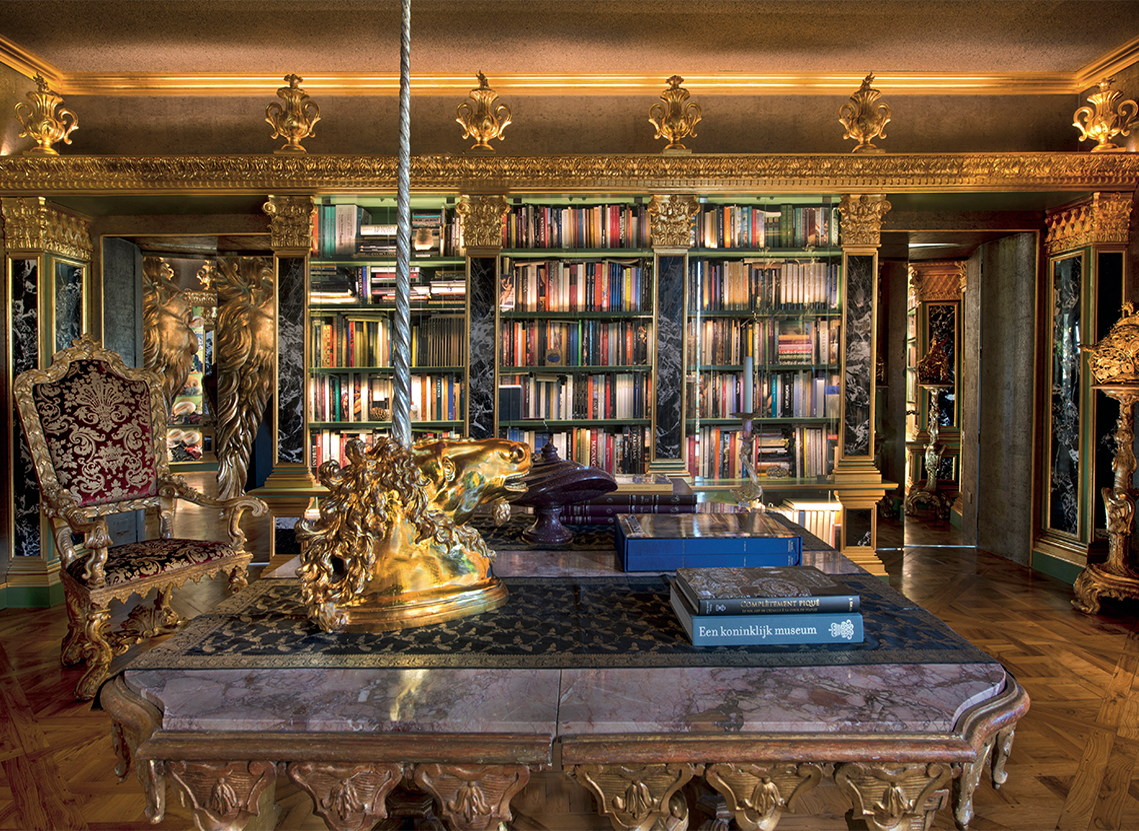
to amaze and convince
This could be Pierre Peyrolle's motto. His approach draws inspiration from the Kunstkammer, those Renaissance cabinets of curiosities, and from baroque art, whose primary principle is rhetoric. He amazes and convinces at the same time, drawing the viewer into a world where materials, shapes, and colors converse. A feast for the eyes. A whirlwind for the mind. A fantasy, sometimes excessive, sometimes of rare subtlety. A theater and staging art, but nothing ephemeral about it. "All the world's a stage." By choosing this quote from William Shakespeare as a preface, Pierre Peyrolle reveals his secrets. For him, decor is theatrical staging, but it reveals a world. Or even worlds. The inner worlds of the men and women for whom he creates spaces that reveal their essence only to those who inhabit them. The world of objects, carefully chosen, artistically arranged, and even "scripted."
Pierre Peyrolle's approach lies in his ability to play with balance and staging. An expert eye, but also a mischievous one. Pierre Peyrolle plays. He hides and reveals. He enjoys secrets as much as appearances. He plays with codes, conventions, and even himself. He places an object on a console in the middle of a landscape as if chance had planted it there. He mixes gold, marble, velvet, and natural curiosities in a gigantic display case. He gives a fireplace the shape of an open mouth, leaving one unsure whether it is devouring or screaming. He composes like a musician: mostly operas, but sometimes chamber music too. An entire orchestra, followed by a solo voice.
Pierre Peyrolle's approach surprises in an era when interior decor is restrained in both form and color. He resolutely chooses generosity. Opulence. The "grand style" whose excesses in color and form combinations contemporary eyes have forgotten. Over time, the decors of the Grand Siècle lost the vibrant brilliance of their gilded gold and shimmering textiles. Pierre Peyrolle brings them back to life. His opulent decors are not immediately accessible.
They require the viewer to be willing to be drawn into a world of colors, shapes, and materials, a world of opulence, surprise, and enchantment. Essentially, to step onto this theatrical stage and play their own role, thereby discovering a true world.